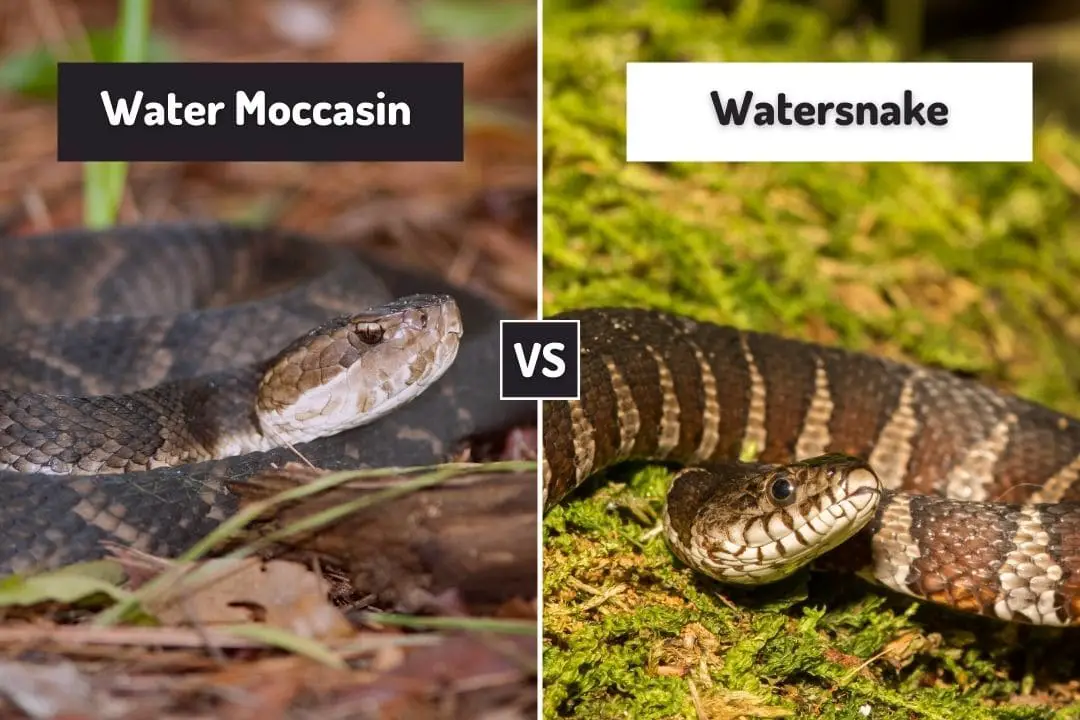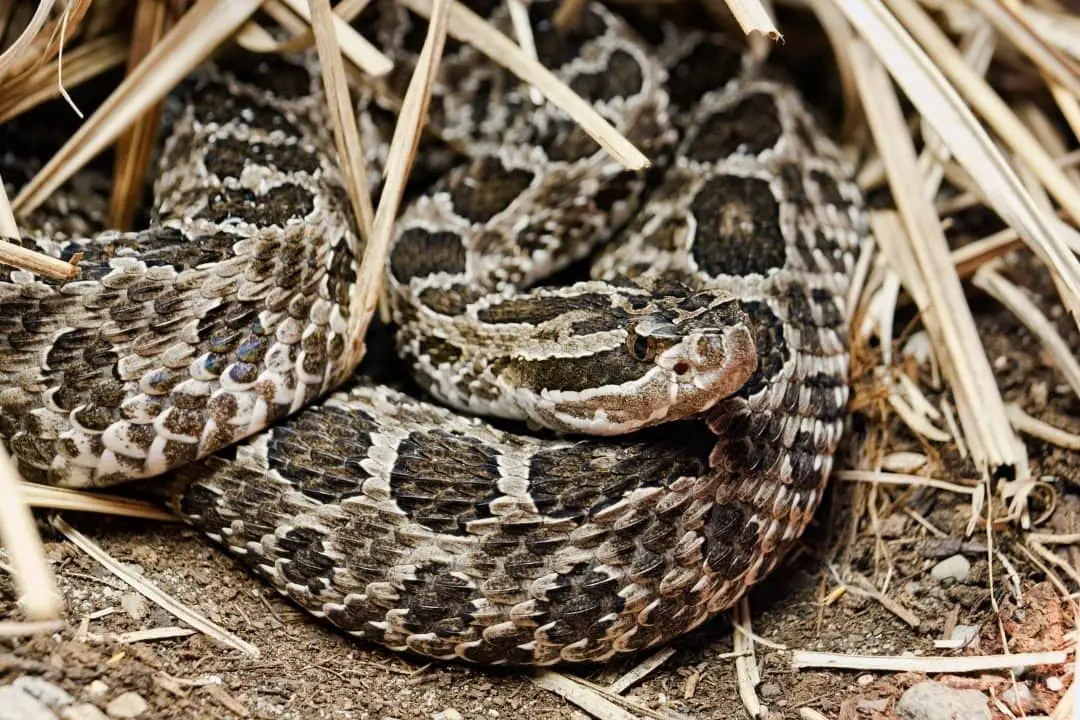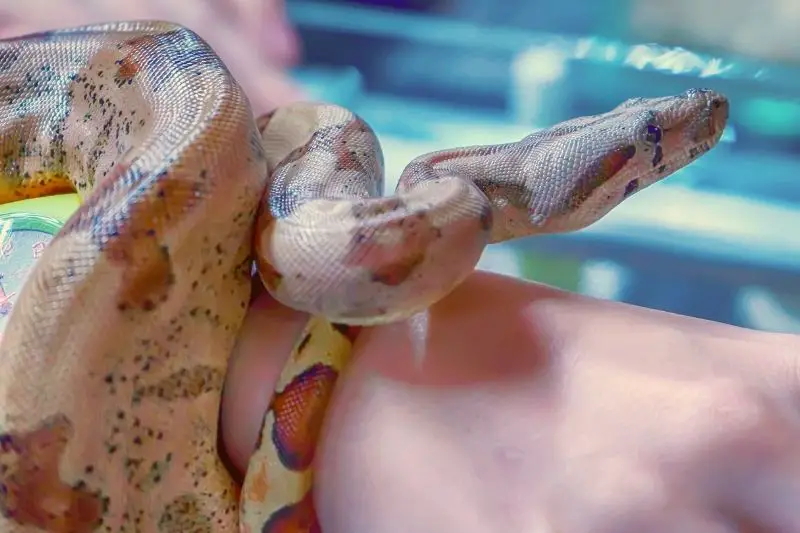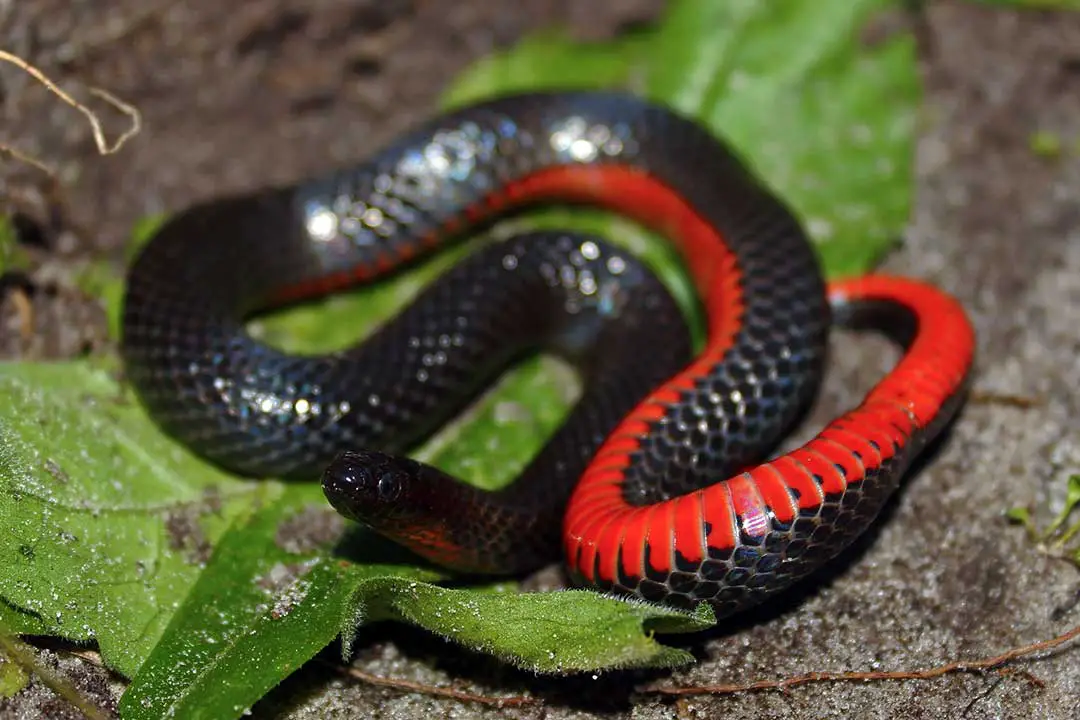The water moccasin is one of the names that refer to the venomous snakes Agkistrodon piscivorus and Agkistrodon conanti.
These two species are very similar, but the Florida cottonmouth is only found in Florida and a small section of Georgia, while the northern cottonmouth is found over a very wide range along the southeast of the United States.
Since these two species are venomous and found in the water, other harmless water snakes including the watersnakes in the genus Nerodia are mistaken for them and killed.
This list goes over how to tell them apart. You should never try to kill a wild snake. If you back off the snake will likely leave. If you try to kill the snake it will bite you. This can be very bad if it is a venomous snake.
Some areas claim the water moccasin is nonvenomous while the cottonmouth is venomous, but this does not always hold true.
Cottonmouths are referred to by many names and it is best not to mess with any snake. Snakes are misunderstood and many similar-looking species can share a common name.
Always check what snakes live in the area you are in and learn this before you head out into the woods or to the water.
1. Head Shape
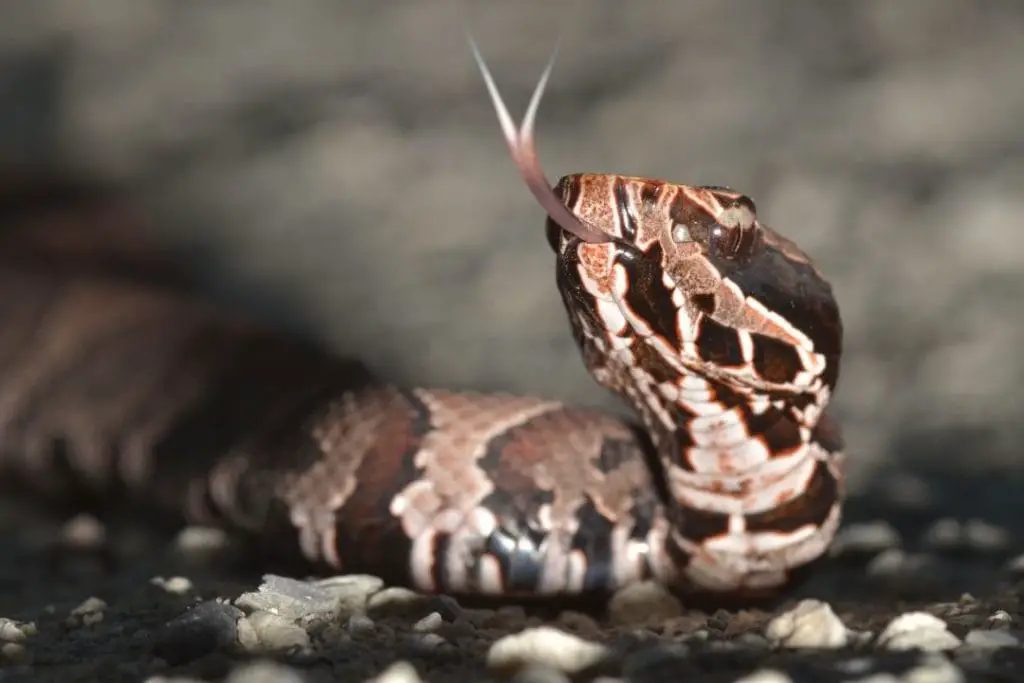
Water moccasins are members of the pit viper family like copperheads and rattlesnakes. This means they have the classic thick head shaped like a blunt wedge.
It is very distinct from the neck. If you can see the snake from the front, you will notice that its head is thick. They also tend to have an upturned snout that hangs over the mouth.
Watersnakes do occasionally spread out their heads to look wider, but it makes their head look thin. Water moccasins also have a facial pit.
This pit allows them to sense heat. Watersnakes in the United States lack this feature.
2. Eyes
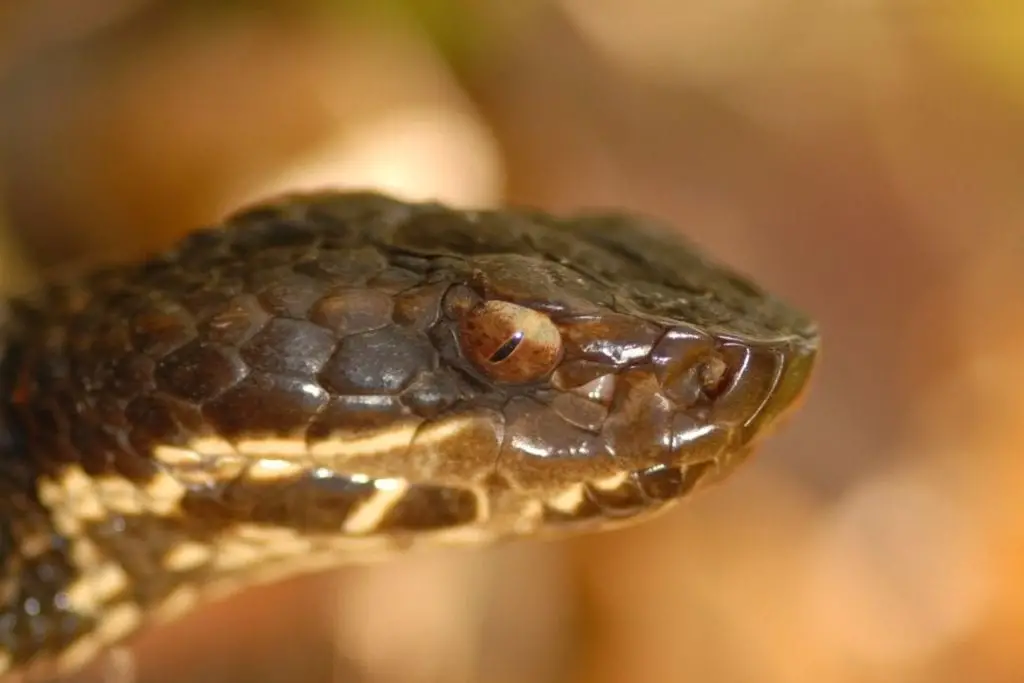
Eyes are a good way to tell. Water moccasins have an elliptical pupil like a cat. Watersnakes have round pupils. It can be hard to tell in animals with darker eyes, so be careful with this feature. Always keep your distance.
You can try taking a photo to see the eyes if you want to use this feature. Another great way to tell with the eyes is to look at the animal from above if it is safe.
Watersnakes have eyes that can be seen from above. Water moccasins have a scale over the eyes that makes it impossible to see from directly above. This is an easy tell if you see a snake swimming beside your boat in the water.
3. Color and Pattern
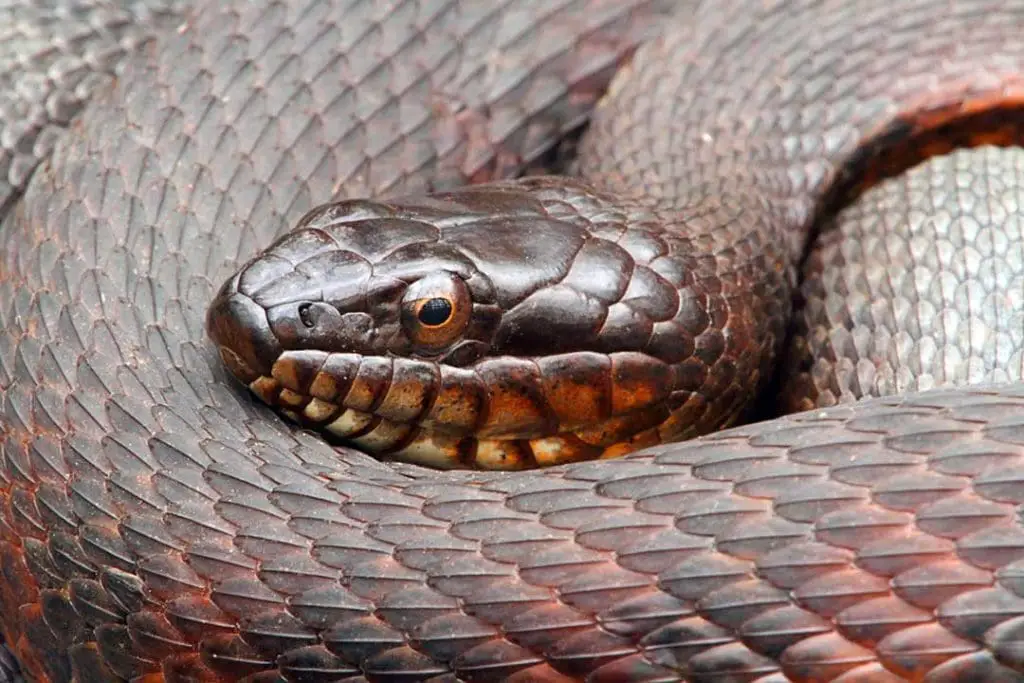
Adult water moccasins are typically dark with very little patterning on the animal. The Florida cottonmouth has more patterning as adults since they tend to be lighter as adults.
In animals with visible patterning on the body, they will typically be tan, yellow, gray, brown, or black with darker crossbands. The crossbands can be lighter in the middle and can also be broken so they do not meet at the spine. The head typically has a brown top and a lighter underside.
Some populations have striping on the head or spots under the eyes.
The belly is lighter towards the head and becomes black near the tail. Watersnakes come in many colors and patterns, but many are dark or have banding. Some can be brown or green in color. There are many species so it is worth it to learn exactly what they look like.
Most watersnakes look pretty similar to adults when they hatch. Some may have patterning that fades as they age such as banding.
They typically have tails that are the same color and pattern as the rest of the animal. Juvenile water moccasins are sometimes confused with juvenile copperheads. Juvenile water moccasins are tan, brown, or reddish. They have a tail that can be yellow or green that will darken to black as an adult. Like the copperhead, juvenile water moccasins use this tail to lure in prey.
4. Body
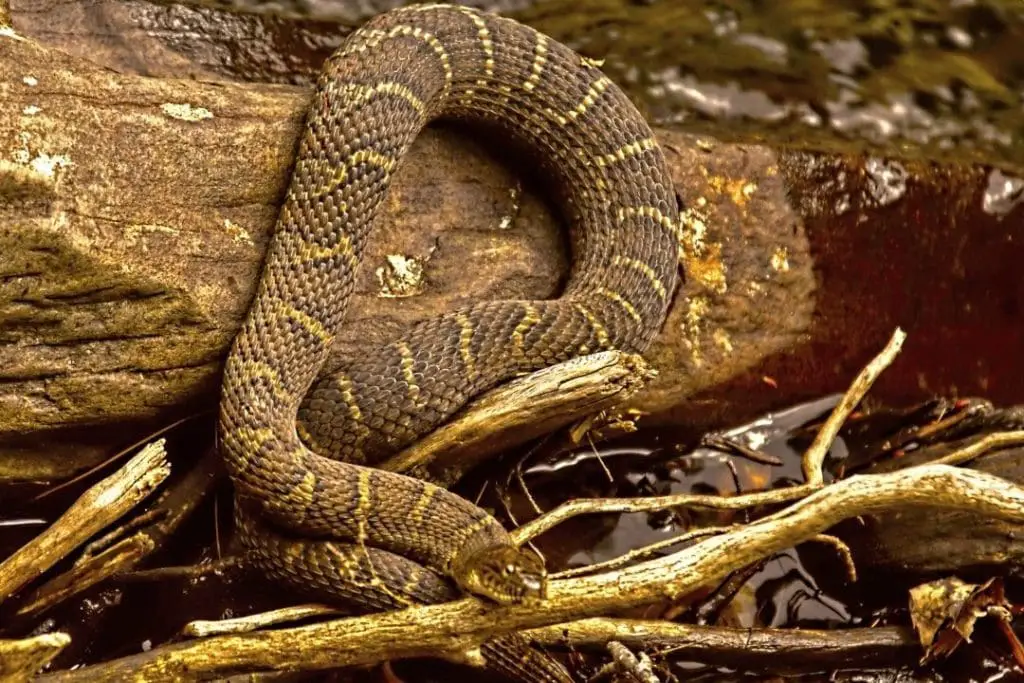
Water moccasins are fairly thick snakes. They are typically 26 to 35 inches long but some very large animals can get up to 71 inches long.
Males are typically larger and heavier. Males can weigh 10 to 20 ounces and females will be 7 to 9 ounces on average. Very large animals can reach up to 10 pounds.
Most watersnakes are lighter, but this depends on the exact species. Some species reach up to 5 feet long but others stay around 3 feet.
They tend to have a pretty consistent thickness throughout their length. Female watersnakes are typically larger and heavier.
5. Behavior
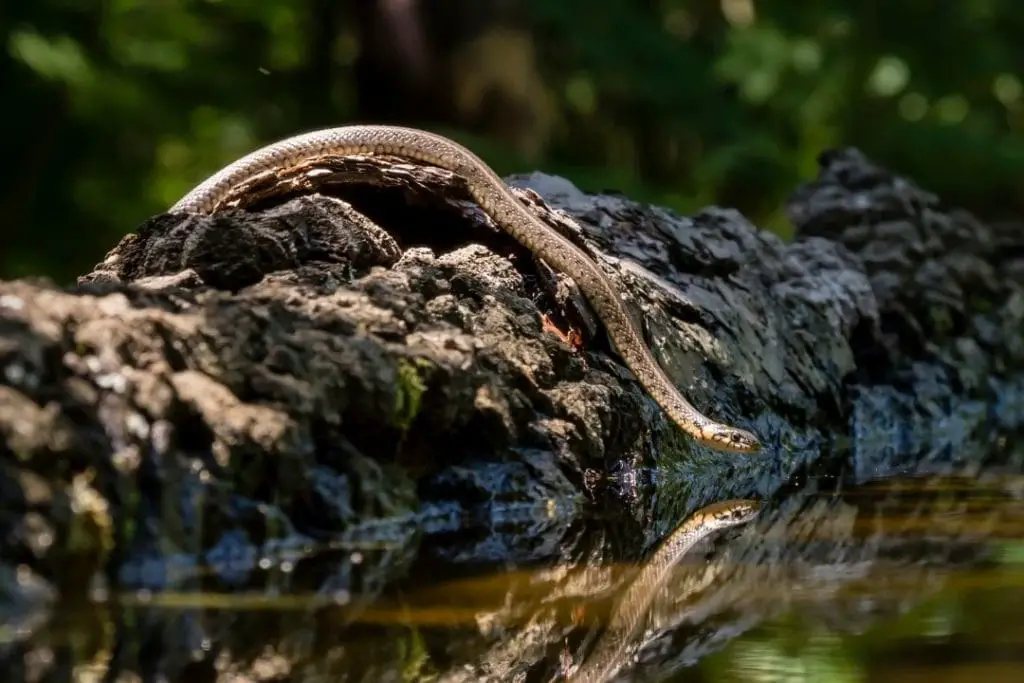
Behavior is a huge difference. A relaxed snake that is just passing by can be hard to tell apart. Water moccasins can have more difficulty moving on land than some watersnakes.
Water moccasins also rarely climb trees, while most watersnakes bask on branches above bodies of water. Water moccasins will frequently move or rest with their head sticking up into the air.
Watersnakes rarely do this behavior. The easiest way to tell is the defensive behaviors the snakes exhibit. Watersnakes that are resting on branches or rocks above water will flee into the water.
They have been known to fall in passing boats on accident when trying to flee.
Water moccasins will try to get away, but they can be pretty slow. Watersnakes are typically more willing to approach you to try to see what you are.
Water moccasins will not approach and will do their best to flee. If they are cornered, water moccasins will curl up and display their white mouths.
Watersnakes that are cornered may hiss or bite. They are known for being much more aggressive compared to water moccasins. They may approach boats, while a water moccasin will avoid boats.
We hope this has taught you how to tell apart these snakes. Remember to never bother a wild snake. If you leave it alone, it will likely leave you alone.
Always watch where you step in areas that may have snakes and wear loose pants to help avoid a snake actually biting you if it tries. If you have any questions or comments, please leave them below.
